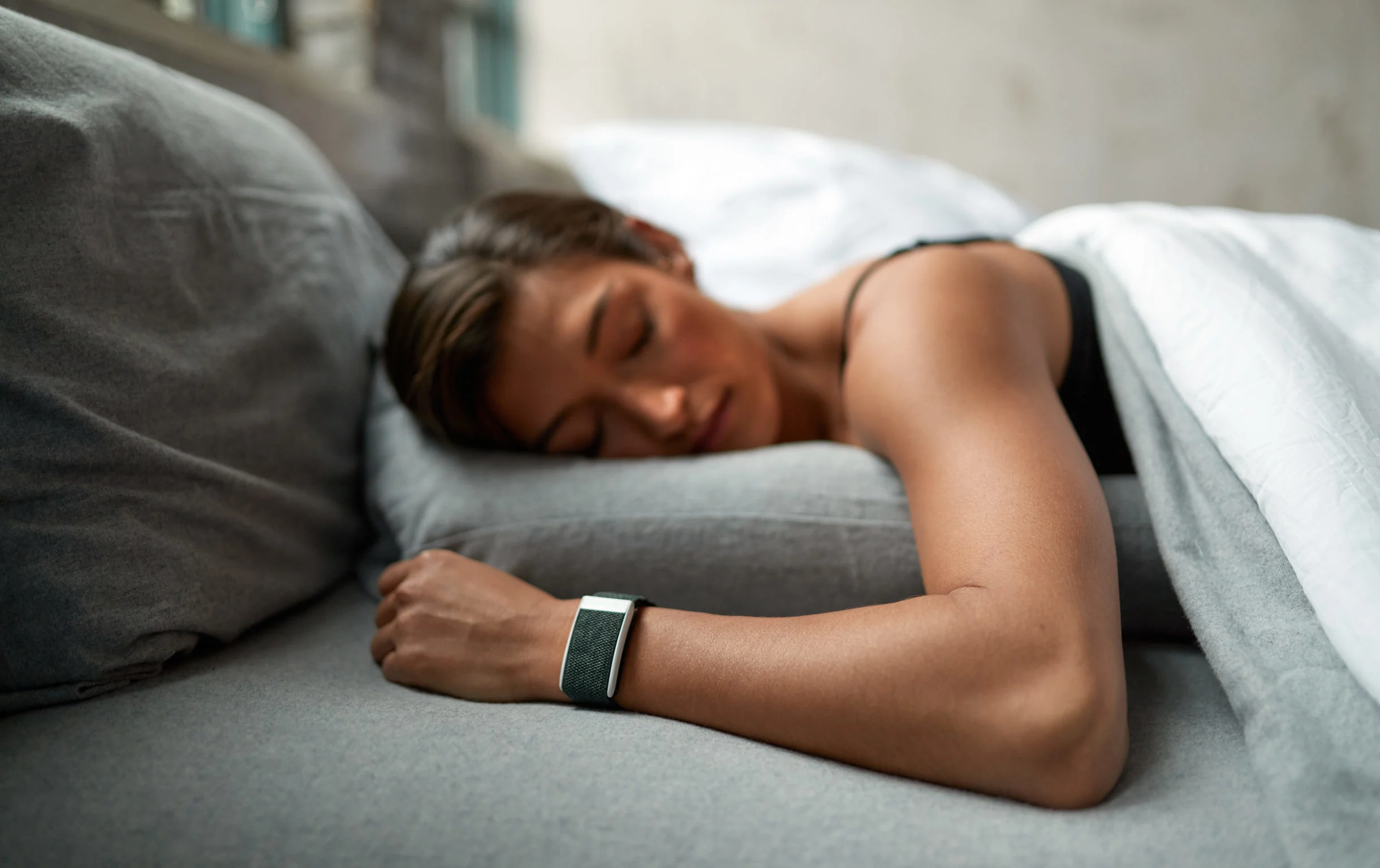Topics
- Article
- Sleep
How to Increase REM Sleep

How to Increase REM Sleep and Improve the Quality of Your Time in Bed
Rapid eye movement sleep, also known as REM sleep, is one of the 4 stages of sleep (along with wake, light, and deep sleep) that your body cycles through on a nightly basis. The REM stage is when you get your “mentally restorative” sleep, and it is when the brain converts short-term memories from the day into long-term ones. We’ll discuss the value of REM sleep and how much is normal, then share a number of things you can do to improve it.
Why REM Sleep is Important
REM sleep is essential for keeping your brain and body healthy, and a sufficient amount is required in order to perform at your best. It also plays an important role in mood regulation as well. Additionally, research suggests when people are deprived of REM sleep they are less capable of remembering things they’ve learned prior to falling asleep. “If you’re not getting enough REM sleep, everybody knows what a cranky toddler looks like. We control it better, but adults have that same thing.” - Podcast 55: How Sleep Impacts Performance
Do I Need More REM Sleep?
Adults should aim to spend about 20-25% of their time asleep in REM sleep, with 90 minutes being what is commonly suggested. The chart below shows the average amount of nightly REM sleep for all people tracking it with WHOOP. The mean for everyone is 105 minutes, with the middle 50% averaging 87-124 minutes of REM per night.

The average REM sleep per night for WHOOP members.
Learn More: How Much REM Sleep Should You Get a Night?
Why am I not getting more REM Sleep?
If you have concerns you’re not getting enough REM sleep, these are a few potential causes (outside of sleep disorders) you should make efforts to avoid that often correlate with decreases in WHOOP members’ REM:
- Feeling stressed during the day
- Late meals or eating close to sleep time
- Screened device usage in bed
- Sleeping in a new place or a bed that’s not your own
- Alcohol consumption before going to sleep
“Alcohol actually disproportionately crushes REM sleep. You miss your first big REM episode, you miss a lot of slow-wave sleep, you just get a lot of light sleep. You don’t achieve what the point of sleep is actually.” - Podcast 43: Alcohol’s Impact on Sleep and Performance
How to Increase REM Sleep
Generally speaking, anything you can do to improve your overall sleep quality, habits and behaviors will benefit your REM cycle too. The most basic thing is to simply spend more time in bed. Here are 45 tips to sleep better, plus some other suggestions provided by the National Sleep Foundation. Our members have the ability to log various sleep-promoting activities in the WHOOP Journal. They can then see the impact these behaviors have on their REM sleep (and other metrics) in Monthly Performance Assessments.
6 Ways To Improve REM Sleep
What follows is a list of several things WHOOP members often find increase their REM sleep time:
- Hydrating properly over the course of the day (not before bed, which can disrupt sleep for trips to the bathroom)
- Massage therapy or a steam room that day
- Blue-light blocking glasses before bedtime
- Reading in bed (the old-fashioned way) prior to falling asleep
- Sleep mask and/or ear plugs while sleeping
- Sound machine or other white noise during sleep
Learn More: How to Get the Best Sleep (Naturally and with Supplements)
Sleep Consistency and rem sleep
We’ve found one thing in particular that really stands out regarding how to increase REM sleep: It’s a concept we call sleep consistency--going to bed and getting up at similar times each day. Your body is able to function more efficiently on a regular schedule, and that applies to your sleep schedule too. An analysis of sleep consistency data from 25,000 WHOOP members showed a substantial rise in nightly REM sleep duration as sleep consistency percentage went up:

WHOOP members get more REM sleep as sleep consistency increases.
The WHOOP app monitors your sleep consistency from night to night, and provides in-depth analysis of it in Weekly Performance Assessments. Learn More: Maintaining Circadian Rhythm with Sleep Consistency

Track and Improve REM Sleep with WHOOP
WHOOP tracks your sleep in detail each night, including precisely how much time you spend in REM and other sleep cycle stages. The app feature Sleep Planner suggests optimal daily bed and wake times to boost your sleep efficiency and better enable you to get all the REM sleep you need. It also offers insights and feedback based on your data trends and behaviors to help give you a more comprehensive understanding of what you can do to increase your REM sleep. Learn More: How Much Time Should You Spend in Each Stage of Sleep?